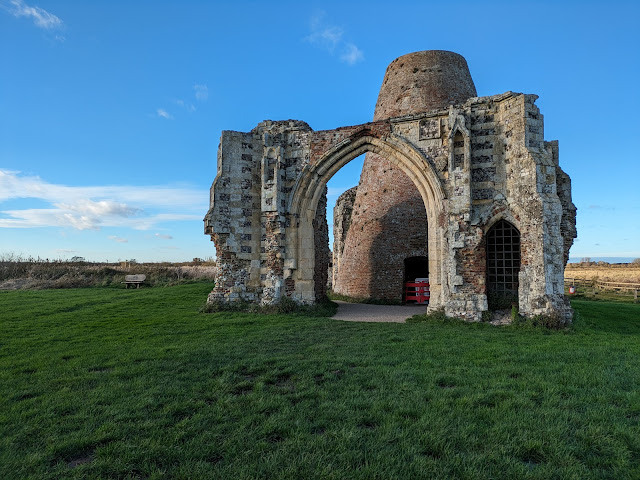Praying where the Cows come Holm

On the Horning to Ludham road turn right at the Dog public house and take the back road to Ludham. After half a mile a farm road and bridle path on the right leads, a mile across the marshes, to the ruins of St. Benet’s Abbey at Cow Holm.
Tradition has it that the first monastic community was established by Abbot Suneman and a group of hermits in 800 AD on what was then an island used for grazing. Great work has been done to reclaim land for agriculture, but then, before the rivers were embanked, the whole area was tidal marshes and open water where the rivers Bure, Thurne and Ant met.
This first monastic community was destroyed by Viking raiders, but in the 10th century it was re-established by Wolfric and seven companions still following as their predecessors the Celtic pattern of monastic life. Under King Cnut the community was refounded and endowed as a Benedictine house. It was named after St. Benedict ( St. Bene’t’s!) but until the dissolution of the monasteries under Henry
Today the site is owned by the Norfolk Archaeological Trust whose interpretation boards help visitors imagine its past glories. Very little of the abbey survives except the gatehouse and the stubs of a few walls. A tall cross marks the place of the high altar!
Once a year, on the Sunday of the August Bank Holiday, there’s a well attended service on the site. At other times pilgrims find themselves alone with the cows that continue to graze the pastures. St. Benet’s at Cow Holm is a place “where prayer has been valid”. If one wanted to follow Jesus’ command to “come apart and rest a while”, or his example, by going to a lonely to pray, it is fit for purpose. There are few better places to recover a proper perspective on life or where the communion of saints is more keenly felt.
Most visitors to St. Benet’s arrive by boat. Many come by bike. Cycle’s can be hired from Broadland Cycle Hire (1603- 783906). There is a bus to Ludham, route 54 from
© 2006 Richard Woodham





Comments